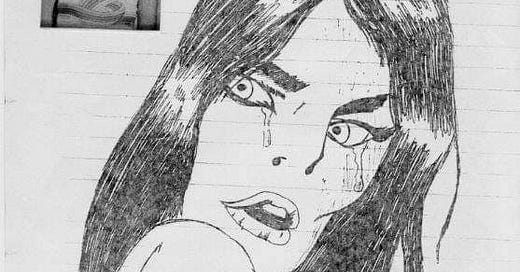Suzette Rodriguez was shot three times in the face at near point-blank range with a .38 caliber revolver in Elmsford, New York—about ten miles northeast of Yonkers—on October 14, 1977. Early reports identified Rodriguez, 21, as “Maria Cortina” (the alias she had used when she was arrested on a shoplifting charge in Yonkers the previous July), and indicated that police were investigating the murder as cult-related. (“Does the girl belong to a cult prone to violence?” asked Charles Lachman of the White Plains Reporter Dispatch, noting that the victim was wearing a coiled snake ring as well as one which police said was “believed to be popular among Gypsies”—in other words, a pentagram ring.) Rodriguez was correctly identified a few days later. “We have a possible motive,” said Elmsford police chief George McElroy at the time. Strangely, Rodriguez was gunned down on the lawn of the house next door to the chief’s, and he discovered the body himself. Neighbors who heard the shots, including McElroy, rushed outside to see a white car with a black top speeding away; police said Rodriguez had been shot while standing up, outside the car. That vehicle—a 1974 Buick Electra registered to Rodriguez—was found four nights after her murder, on Morris Avenue in the Bronx.
A month later, Elmsford police concluded that drugs had been the motive, though specifics were in short supply (“Gangland killing linked to drugs,” Yonkers Herald Statesman, November 16, 1977). Rodriguez had lived with friends in the Bronx and was associated with known Spanish Harlem drug dealers, but at the time of her death was planning to return to her family in Florida. Chief McElroy felt confident that an arrest was forthcoming, but the trail abruptly went cold. No arrest was ever made—and, more than forty-six years later, the murder of Suzette Rodriguez remains unsolved.
What links her to the Yonkers cult that carried out the Son of Sam attacks? Both David Berkowitz and “Billy the Artist” (whose sketch of Rodriguez is reproduced below) remembered her from the group’s meetings in Untermyer Park. Berkowitz knew Rodriguez as Maria; Billy as Maria or Marie. Billy recalled that she was often seen alongside a man called Ken, identified by Berkowitz as a recruiter for the Process Church. Maury Terry believed (and I concur) that this was Ken McNaughton, an inner-circle member of the Process. It goes without saying that, even if drugs did play some role in Suzette’s death, this does not preclude cult involvement. The park had long been a hot spot for substance use, and the Yonkers cult was engaged in the drug trade.
There’s one more intriguing item which indicates a direct link between Rodriguez and the local cult. At the time of her death, Suzette was wearing (in addition to the snake and pentagram rings) a gold necklace engraved with the name "Suzanne"—not Suzette, but Suzanne. Had Rodriguez stolen the necklace from cult priestess Suzanne Conway? Or was there some relationship between the two? We may never learn the answers to these questions. In any case, say a prayer or harbor a kind thought for Suzette Rodriguez. She deserved better.
(Note: In 2019, I spoke to a detective with the Elmsford Police Department in an attempt to learn more about Suzette’s murder. He refused to part with any information, of course, but I asked if it was possible that the .38 revolver used to kill Suzette was the same one mailed to David Berkowitz just over a year later—in November 1978—at the Central New York Psychiatric Center in Marcy. [The package containing that loaded .38 was intercepted before it reached Berkowitz.] The detective said that ballistics tests had “probably” been conducted to rule out that possibility, but I find myself unable to take this for granted. Same gun or not, the timing remains interesting.)
Below: sketch of Suzette Rodriguez by “Billy the Artist,” who attended some of the cult’s meetings in Untermyer Park in June 1976. (Inset: Suzette’s July 1977 mugshot.)




